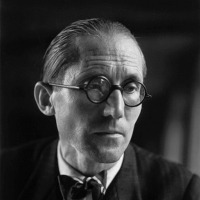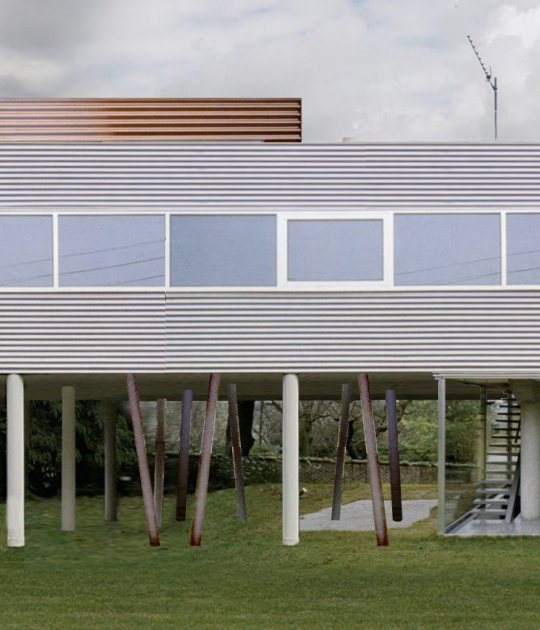Asmund Havsteen-Mikkelsen works with modern architecture in his paintings and Villa Savoye from 1931, the character of Le Corbusier plays a major role in his practice. He has designed the house 25 times, painted it nine times and lastly designed the house in 1: 2 for the exhibition Floating Art 2018. The house expresses Le Corbusier's five new principles of architecture as a booth: the free facade, the house on pillars, the roof terrace , the open plan and the horizontal window band. The principles have had a major impact on our way of visualizing and constructing architecture in Europe - a style that has set the framework for modern housing and lifestyle.
A piece of architecture history that is being challenged in Asmund Havsteen-Mikkelsen's work Flooded Modernity, where Villa Savoye is about to go to land in the fjord. Architecture is not just brick, but also constitutes a social and political space. When Flooded Modernity sinks in Vejle Fjord, it is a comment from the artist that we must remember to protect our critical use of reason - a pillar of modern society. With recent years of political events such as Brexit, the choice of Trump and advocacy advances in Europe, Asmund Havsteen-Mikkelsen sees a critical public being particularly challenged.
The artist show us the installation as a half-submerged vision of a once possible future. It’s also a critical comment on the significance of modernity today; as a “comment on the sinking of the public sphere after the disclosure of the Cambridge Analytica scandal and the manipulation of democratic elections through social media.”
For the third year in a row, the exhibition presented by Vejle Kunstmuseum invites participants to develop ideas on global and political challenges, such as climate, pollution working in the field of art and architecture.
"The art, as we know it from the museum, through a drawing, a painting or a sculpture fills less on this year's Floating Art. The twelve artists and architects who exhibit this year are working on the theme of water. The water is an integral part of their works and the societal themes that occupy them. The different skills in architecture and art are reflected in their ways of addressing the task - sometimes the conceptual expression of the arts overlaps, and other times the skills are connected in a field between building structures and art installations made to Vejle Fjord."
The works can be experienced 24 hours a day free until September 2, 2018.






































